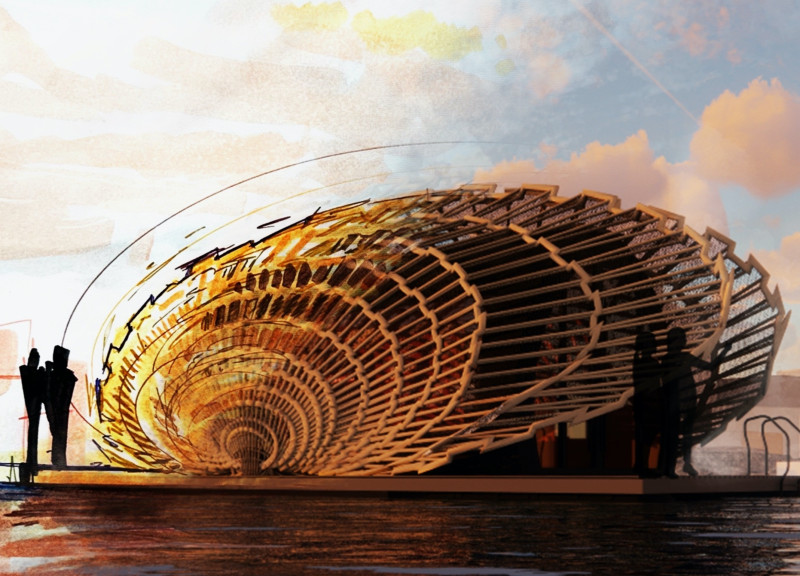5 key facts about this project
At its core, the project serves a multifaceted purpose that ranges from offering versatile spaces for public gatherings to providing private areas for individual reflection and productivity. The layout is carefully devised to facilitate movement and interaction, ensuring that each area is accessible and conducive to its intended use. Public spaces are keenly integrated with amenities that support various activities, whether they be social, educational, or recreational. The design emphasizes connectivity, both physically through well-planned pathways and visually through strategic placements of windows and openings that draw in natural light and foster a sense of openness.
Significant attention has been paid to the building's exterior, which showcases a combination of materials that echo the area's architectural vernacular while also introducing contemporary elements. The façade features a blend of concrete, metal, and glass, creating a visually interesting interplay of textures and forms. This choice of materials not only provides durability but also minimizes environmental impact, reflecting a commitment to sustainable architectural practices. The transparency afforded by the extensive use of glass invites the surrounding landscape into the structure, thereby blurring the lines between inside and outside spaces.
Moreover, unique design approaches are evident throughout the project. The incorporation of green roofs and living walls highlights a commitment to sustainability and energy efficiency. These features not only enhance biodiversity but also contribute to the well-being of occupants by improving air quality and providing pleasant landscapes for both users and passersby. The architectural design integrates biophilic elements, allowing individuals to experience a connection to nature from within the building.
Internally, the project is characterized by adaptable spaces that can respond to diverse user needs. Flexible partitions allow for the reconfiguration of spaces depending on the activities being hosted, ensuring the architecture remains relevant over time. The interior finishes are chosen for their quality and warmth, utilizing materials such as wood and stone that contribute to a welcoming atmosphere, further enhancing the functionality of the spaces.
Throughout the project, sustainable practices are intertwined with innovative design strategies, showcasing a forward-thinking approach to architecture. The incorporation of energy-efficient systems, such as solar panels and rainwater harvesting mechanisms, reinforces the project’s commitment to minimizing its ecological footprint. This blending of functionality with sustainability not only serves the immediate community but also sets a precedent for future architectural endeavors.
This architectural project is not merely a structure; it is a manifestation of thoughtful planning and design that resonates with its location and user base. The careful consideration given to each element, from material selection to spatial organization, highlights a sophisticated understanding of contemporary architectural needs. To gain a deeper understanding of the complexities and nuances of this project, readers are encouraged to explore the architectural plans, sections, and designs that detail the innovative ideas and thoughtful execution behind this remarkable endeavor.























